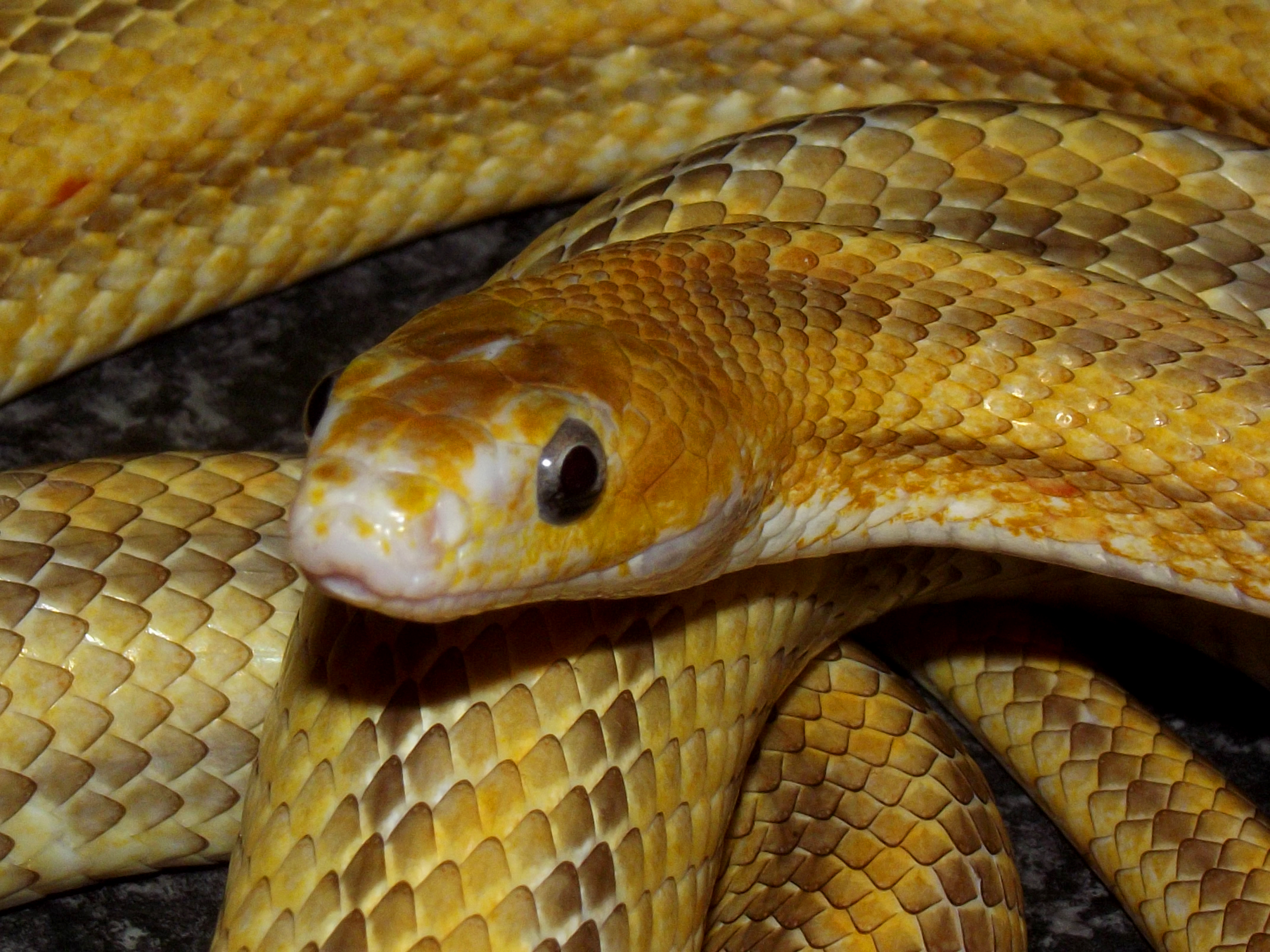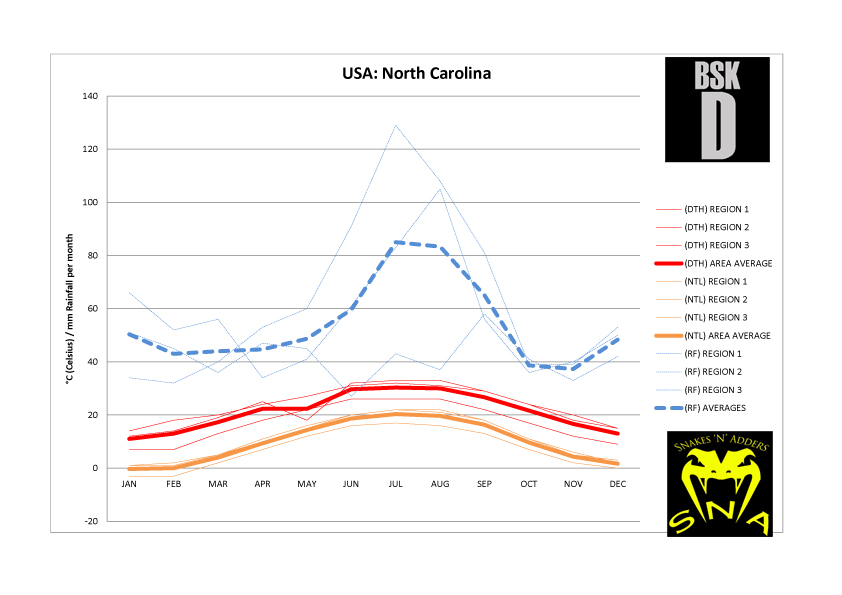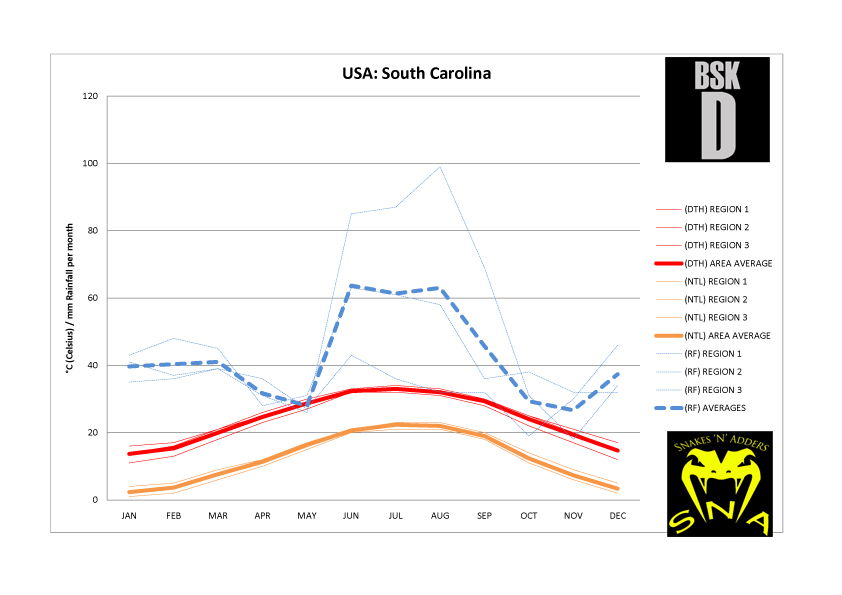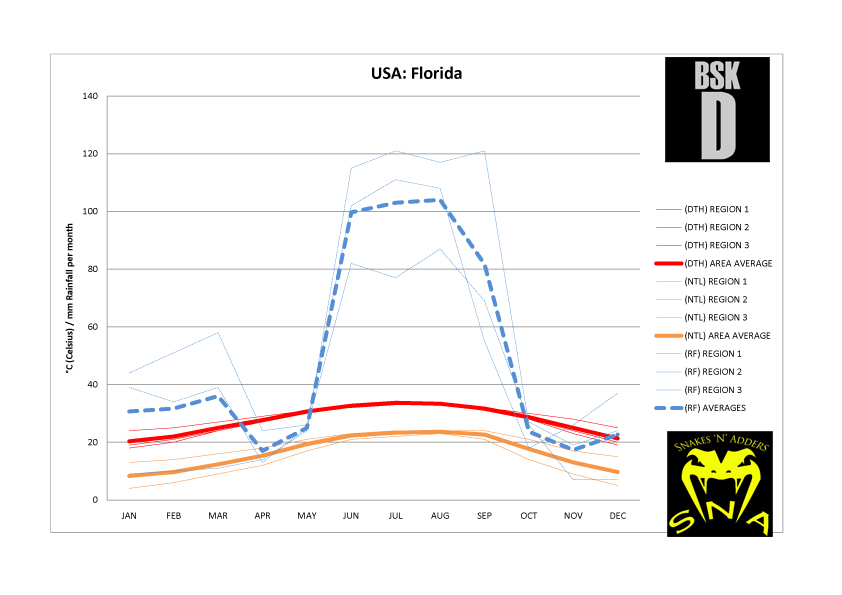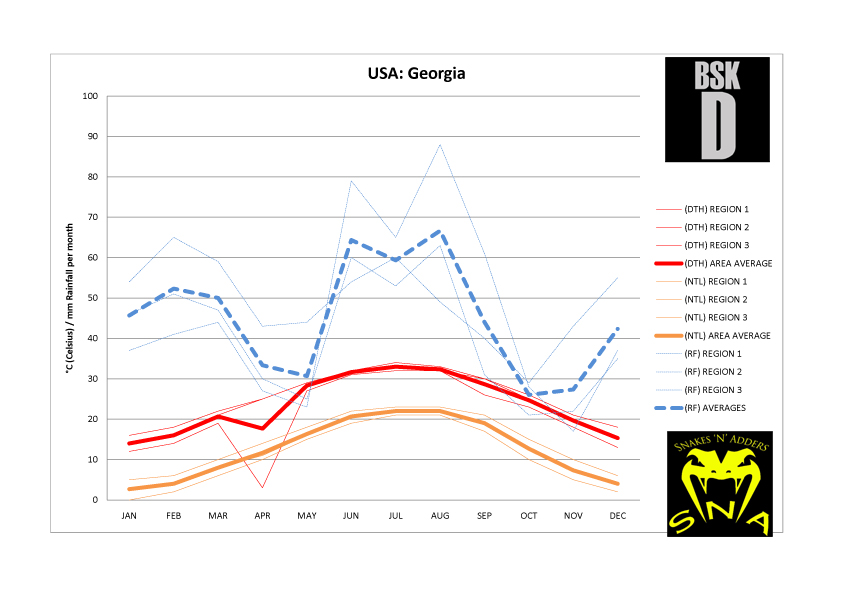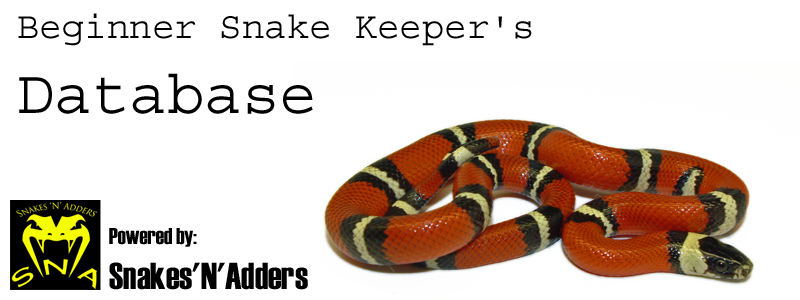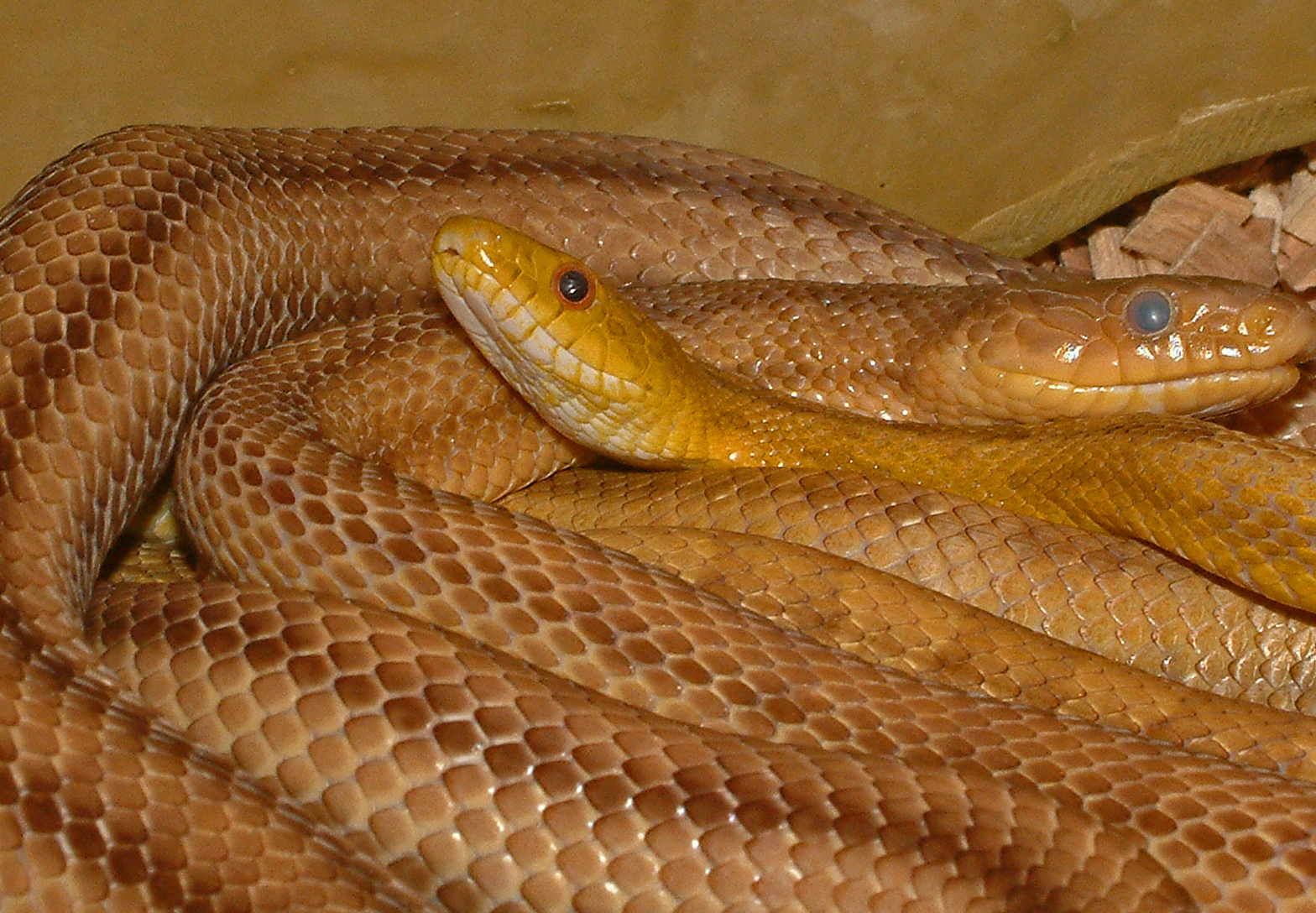
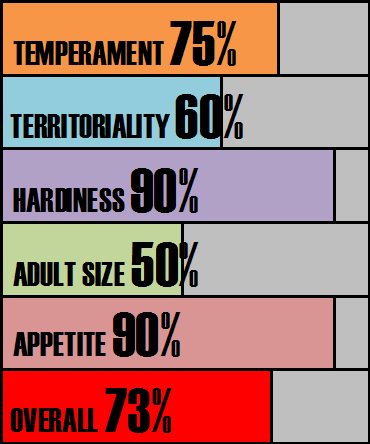

Species Notes based on experiences:
This species has now been rolled into the Eastern Rat Snake (Pantherophis alleghaniensis) which encapsulates the Eastern range of the Black Rat Snake to the North. The Yellow Rat Snake (Pantherophis obsoletus quadrivittatus) and the Everglades Rat Snake (Pantherophis obsoletus rossalini). This seems counter intuitive to what goes on and is still recognised and worked with within the hobby. So I will deal with the American Rat Snakes as they were. Yellow Rat Snakes are the chunkiest of the Eastern Race with larger animals carrying impressive mass. They are heavier set than either the Everglades or Florida Keys Rat Snake. When born they are saddled with only the very faintest hint of yellow pigment. They appear very similar to the Grey Rat Snake during this phase of their life. With each subsequent shed skin yellow pigment will increase and intensify. From around 18 months onwards the saddles edges seem to stretch trying to touch the saddle in front and behind. The centres of the saddles begin to fade out. Al this point we can see both the juvenile saddles and adult stripes. As the animal reaches sexual maturity the centres of the saddles will have almost disappeared and the saddle edges will have connected front and back to create full length stripes. This is a great friend of local farmers who help to manage mammal pests raiding corn and wheat barns.
Score Analysis:
Temperament of Yellow Rat Snake for the most part is very good. This is a patient snake and makes a good species to handle. Babies occasionally may be defensive and rattle their tail through fright. IF particularly threatened they may raise the front of their body into a series of S’s. This is not a snake that is quick to bite however and would much rather wriggle and try to escape your grip. These behaviours are fleeting and animals will usually calm down well.
Territory disputes are more likely to occur than temperament issues. Regardless of how long you have had your Rat Snake they never seem fond of being disturbed and can be quite grumpy about it. This may involve darting to the other end of the enclosure or rattling their tail loudly in the substrate. Whilst this isn’t really a hissing snake they make their displeasure known by raising the front 1/3 of their body into a series of ‘S’s. The head may also be flattened. This is nearly always bluff. Once removed from the enclosure many of these behaviours will abate almost immediately.
Yellow Rat Snakes have proven over the years of being kept to be very tough snakes capable of growing and breeding in even the most haphazard of care. Yellow Rat Snakes are most commonly associated with Florida but their range extends further north where harsher winters will be encountered. In captivity this is a resilient and reliable snake. A superb pet species.
The average mature size of a Yellow Rat Snake is to around 6ft and animals in excess of 2 metres are rare. This is a heavy set snake and carries more heft than either the Everglades or Florida Keys Rat Snakes. It is an active snake that likes to climb and investigate its enclosure. Provision of climbing apparatus would be recommended. This is a strong snake however and will feel more powerful than a Corn Snake of the same length. We would have no issues if younger keepers wanted to try their hand with this species. It would be a case of meeting the snake first and ensuring that they were a good match.
All North American Rat Snakes have a superb appetite. They will accept a range of prey items and grow rapidly. Care must be taken not to create obese animals as they are also willing to feed too well. Of all the things that could go wrong with a pet snake. A rat Snake and its love of food will not be one of them.
Enclosure recommendations:
Tub:
This species is not suitable for keeping in a tub long term
Vivarium:
120cm x 60cm x 60cm
Budget rig: -
60cm x 30cm heat pad
On / off thermostat
Digital thermometer to monitor thermostat performance
Warm hide
Cool hide
Water bowl
substrate
Recommended rig (vivarium only): -
250w ceramic heat emitter
Ceramic lamp holder and bracket
Bulb guard
Day night thermostat
Digital thermometer to monitor thermostat performance
Various logs and caves along the thermal gradient
Damp hide (optional)
Climbing and exercise branches
Plants and foliage (live or artificial – your choice)
Water bowl
Substrate
UVB light (8w T5 shade dweller 7% kit from Arcadia or equivalent) (optional)
Subterranean section to vivarium for further psychological security (optional)
Climate analysis:
Northern elements of the range have winter average night time lows approaching freezing. Of course single days may well dip far below this. A period of reduced activity would be expected, in harsh winters a full brumation period. This species will benefit from a cool down in winter for a couple of months to ensure good sperm count in the males. This snake is a real foody, this period of cooling should coincide with no food the 8 week period allowing the snake to live off its reserves.
Conclusion:
A superb pet snake that has been kept for 40 years or more in captivity. They are great feeders, resilient and strong snakes that will tolerate the odd faux pas on the keeper’s side without falling ill. We would have no issue with younger keepers having a Yellow Rat Snake but care should be taken to have introductions prior to purchase so that compatibility is confirmed. This is not a snake I would recommend mail ordering as a first snake. There will still be defensive snakes as part of the captive bred populous.
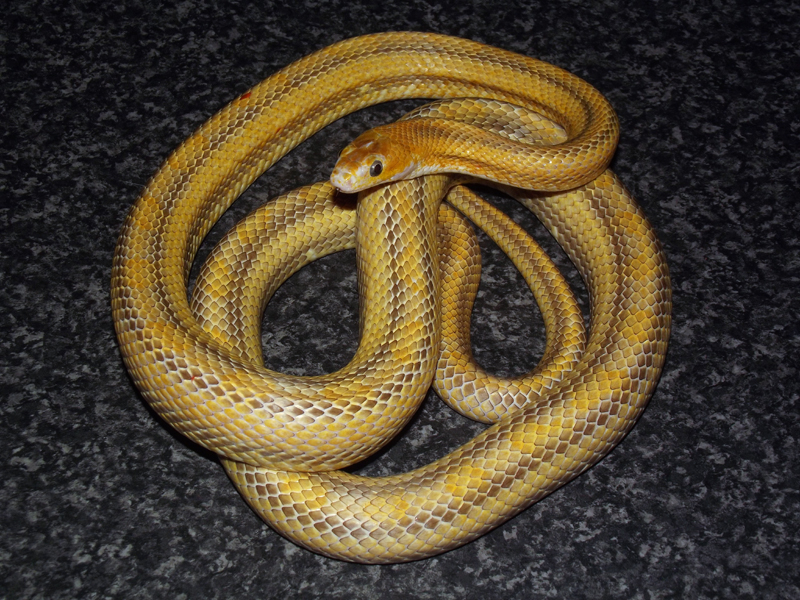
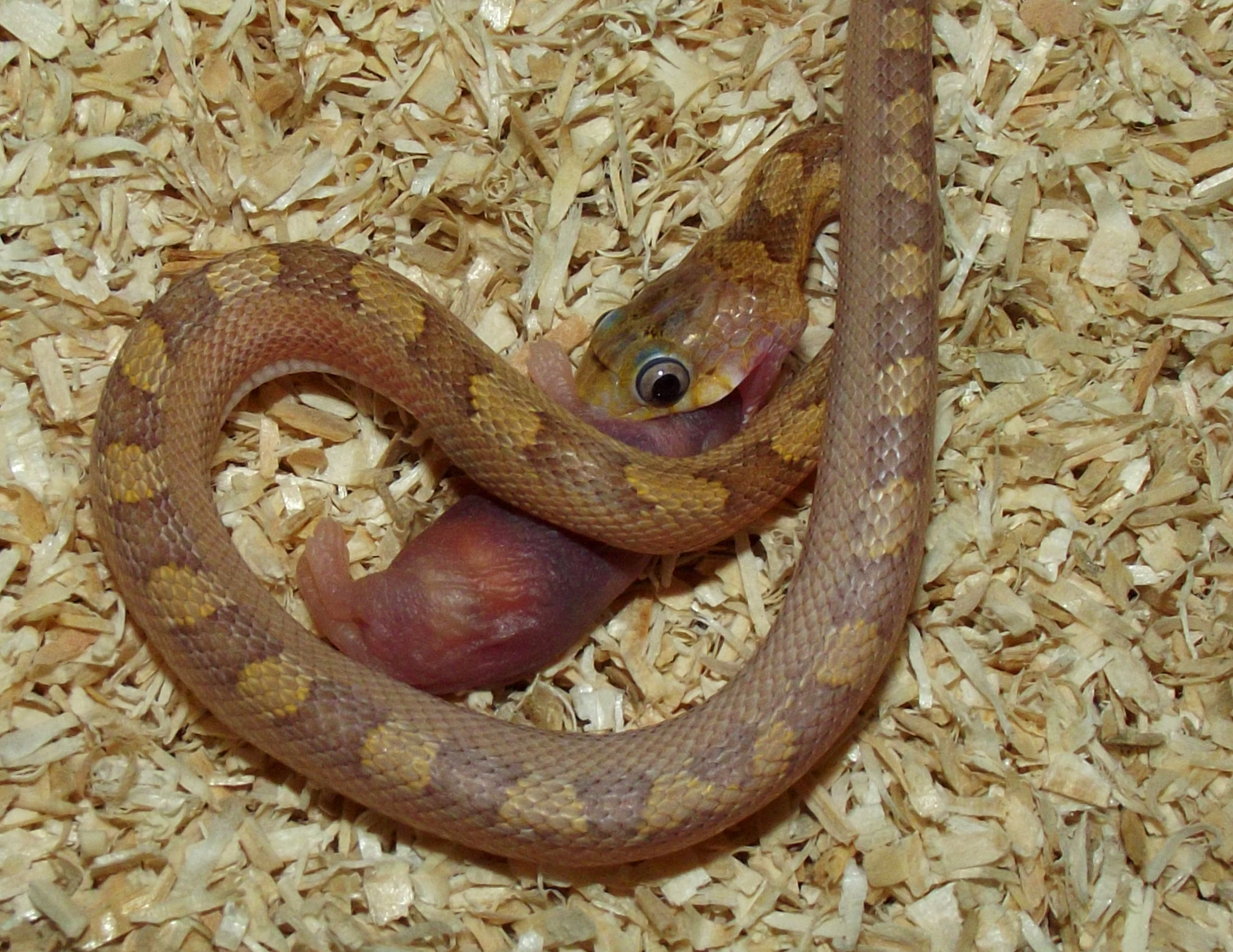
.jpg)
